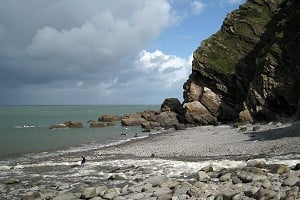
GB Paraclimbing Team member and star of the film 'Climbing Blind' Jesse Dufton recently led his first E2 with an ascent of Forked Lightning Crack (E2 5c) at Heptonstall. Just two weeks later, Jesse climbed another E2 (Auricle (E2 5c)) 'non-sight' - as he describes his style of ascent - at Bamford. Since the IFSC Paraclimbing World Cup circuit was cancelled, Jesse has spent post-lockdown focusing on trad mileage and it's clear that both his prior training for the competitions and lockdown exercises are paying off...
Jesse was born with a degenerative eye condition called Rod-Cone Dystrophy and his vision has deteriorated to the extent that he can only differentiate between light and dark in a very narrow field of view. We sent Jesse some questions to find out more about his climbing and what he's been up to since his impressive lead of The Old Man of Hoy last year.
How was lockdown for you? What did you get up to, how did you stay fit?
Lockdown has been a strange time. Luckily my job hasn't really been affected, other than I'm now working from home instead of the office. We kept our morning commute, but instead of walking to the office, Molly and I walked around the woods and the fields local to our house every morning before starting work, which was nice. In terms of training, I'm lucky enough to have a few bits of training kit in my garage. Motivation at the start was quite low, as the comps I'd been training hard for over the winter had all been cancelled. But I soon got cracking again. I set myself the goal of improving my max finger strength, as this is a relative weakness for me and something I could train with the kit I had. I've seen improvements, which is great. As soon as restrictions were eased and we were allowed out, my focus switched back to trad climbing. We've taken every opportunity to get outside when we can.
Can you explain what you can see and what your field of vision is like?
My eyesight is degenerative, and it's now deteriorated to the point where I only have light perception, and that's in an extremely restricted field of view. The best analogy I have is: imagine that you are looking down a thin drinking straw. Essentially, I can tell if there is light or dark at the end but that's it. Critically, when I'm climbing, I can't see my hands or feet, any of the holds, the features of the rock or the gear even as I'm placing it; I can't even see the crag. Basically, my eyes don't give me any useful information when I'm climbing.
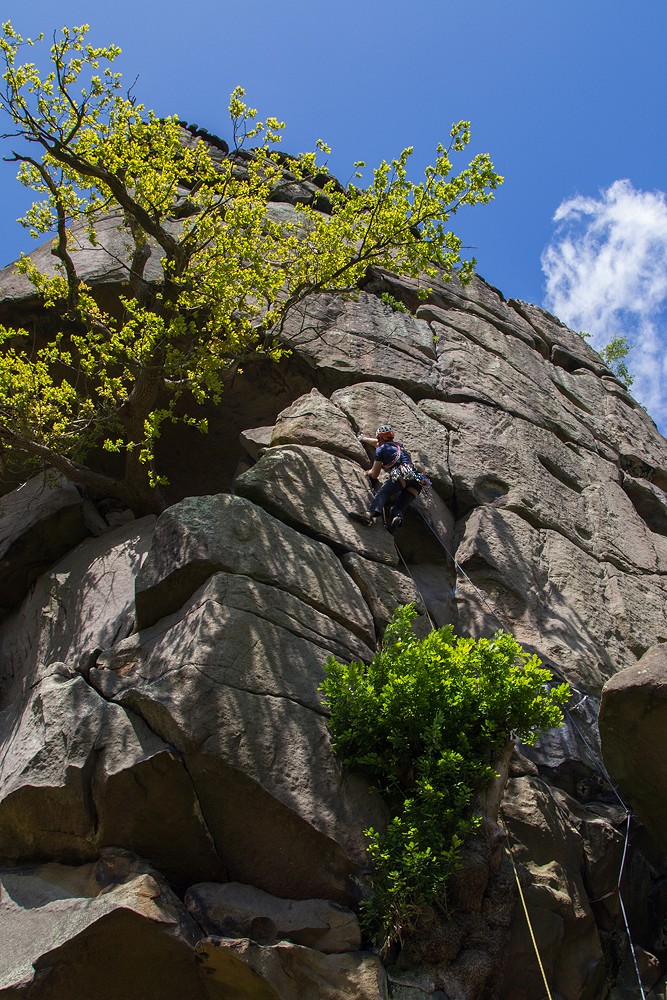
Can you explain the system you and your wife Molly use to ensure that you place gear safely on a lead?
Molly and I have climbed a lot of trad together. Placing good gear comes with practice and experience and I feel confident placing my own trad gear based purely on feel; I've done it for long enough. Molly will read me the route description from the guidebook and describe what the route looks like and where I may get some protection in etc. As I'm climbing, Molly generally directs me to cracks that she can see from the ground which might be suitable for gear, but it's down to me to have a feel of the crack and decide if it is/isn't suitable. Molly hasn't climbed the routes beforehand and when she's looking up, she just can't tell for certain. Once I've felt the crack I will decide if I can get gear in. I can tell by feel if it's parallel sided and might take a cam or it tapers and might take a nut. I compare the size of the crack to my hand in order to work out what size cam or nut I need. I'll place the piece and if Molly can see it, she can tell me if it looks good, but most of the time she can't. Sometimes with big pieces I can get a tactile inspection - I feel each of the cam lobes with my fingers to check it's seated and bomber - but most of the time with small bits this isn't possible and I just have to trust it.
Do you ever work routes beforehand, or do you tend to go for a 'non-sight'?
I basically never work routes, 99% of my climbing is on-sight. The other 1% is when I fall off and get it ground up! I like getting on new routes - there are so many climbs that I've not even tried, I haven't felt the need to project anything yet. People often ask if Molly climbs the routes first to get the beta, but we don't do that, all the routes are new to her too. We tend to take turns leading different routes, like most other climbing pairs I guess. Maybe in the future I'll try redpointing/headpointing something, but I tend to get bored and frustrated quite easily when I can't do something so I'm not sure my personality is suited to that style of climbing.
When you're climbing, are you able to easily imagine the positions of footholds and other holds that you've felt and held along the way?
Yes, once I've touched a hold with my hand/foot I can remember where it is in 3D space and it's much easier to move my other hand/foot straight to it. When a climb traverses and the handholds don't become the footholds, I find it much more difficult. Balancey traverses where you lead with your feet are really hard for me. I think I can build up a picture of the route after I've climbed it, but if I tried to draw it, it probably wouldn't look anything like reality, as anything I didn't feel would be missed off the image.
Are your other senses heightened?
Kind of, but my other senses don't actually get more sensitive. It's not that I can hear something others can't, what happens is that I learn to pay attention to information most people discard in favour of processing data from their eyes. If a sighted person closed their eyes, they would be able to hear, smell, feel exactly the same as I can, I just am much more reliant on the feeling as I don't have the sight. My proprioception is really good, but that's because I've become accustomed to relying on it.
Give us a run-down of all the routes you've been leading recently!
We've done quite a lot since lockdown restrictions were eased, which has mainly involved day trips to the Peak gritstone and a week's holiday in Yorkshire. Dry weather has lined up with weekends, which has been fortunate for us weekend warriors! Molly and I have done over 130 trad routes together since then. I think I've led just over 30 HVS climbs or harder. Most are memorable, but the ones that stick out are:
Suicide Wall HVS, Cratcliffe – another Hard Rock tick and an absolutely brilliant route. I led it as one big pitch. It felt sustained, my endurance did me proud on this one. Laybacking up the big flake felt pretty exposed.
Cue HVS, Stanage Plantation – Molly picked this out from the description, "hard work but oddly appealing". It's worth seeking out, it has some cracking moves on it and felt hugely satisfying. I had to work much harder on this than most as I couldn't see the good holds to go for, so had to pull up powerfully and lock off while I searched them out by feel.
Prostration HVS, Ramshaw – I tried this a few years ago and got stuck in the slot. This time I seemed to reach out of the slot without issues, get the crucial jam and cruise to the top which was hugely satisfying.
Green Crack HVS, Curbar – a burley Joe Brown classic. I stuffed up my first attempt trying to layback it, got some airtime, but jumped back on and jammed to glory, a great line and a stout challenge.
Left Unconquerable E1, Stanage Plantation – I had led Right Unconquerable years ago and it was time to complete the set. I had put the hammer down and powered through the crux without issues.
The Link E1, Stanage Popular – I'd led Congo Corner a couple of years back and had this on my list since then. Again, I managed to blast through the crux without issue and it was the confidence I got from these two that gave me the green light for Forked Lightning Crack.
ETA: Jesse has since ticked another E2 5c, Auricle at Bamford, in addition to Forked Lightning Crack.
Why did you choose Forked Lightning Crack E2? Tell us about the ascent!
My mate Charlie had recommended it to me as he thought it would play to my strengths. I'd never heard of it before his recommendation, but I think it was spot on. The route suits me. A big obvious feature to follow so I can't get lost. No intricate sequences of small footholds, big obvious gear and a healthy dose of Whillans brutality required - right up my street. Molly assured me that it looked like a mega line.
Molly helped me find the starting holds and as I pulled on and made the initial moves, I was surprised at how steep it was, I hadn't imagined it was going to be THAT steep. I was relieved to get my first gear in, and once I'd put a couple of bits in the first horizontal break, I totally relaxed. I think this mental management is one of the things I'm most happy about, I think that every time I manage to calm myself as I did then it becomes easier to do it next time, which allows you to climb at your best.
Was there an element of uncertainty about the gear?
No more than usual. The bits I got in the first horizontal break were both good and then I reached up and got a massive cam deep in the first vertical crack. I could reach in and feel each of the lobes with my fingers, so I knew it was bomb-proof and I just had to worry about the physicality of the crux. Often when I'm climbing it's not possible to get a tactile inspection of my gear placements, and as I can't see them I have to trust myself that I do place good gear, which presents an extra mental hurdle, but on this occasion I could get the tactile inspection so my mind was totally at ease.
How did you find the physical aspect?
Everything seemed to come together for me once I got into the crux. Yes, it's burly to start and it certainly requires a good pull to get high and established in the first vertical section. My memory of the moves is a bit hazy, I always struggle to remember my climbing when I've been "in the zone". I do remember a few off-balance moves where I had to stave off the barn door.
I managed to find a semi-restful position to get some gear in the second horizontal break and got it in quickly. When you're blind there is nothing worse than fumbling around in a bad position trying to get some gear in and knowing you're at the most exposed. Fortunately, I slammed one home quickly and got into the second vertical section. I got a solid knee-jam which allowed me to take weight off my arms and get another runner, but I instantly regretted wearing shorts. This was the first point where I couldn't quite work out the sequence, it took me a little while to work out how to get higher in the second vertical section. I was pleased that my endurance was holding up. I wasn't pumped so I had time to chill out and work out the moves and I was pretty gratified when I grabbed the ledge at the top of the crack. I thought about trying to extricate myself in style, but opted for the safety of the good old belly flop...
Molly: "Can you imagine being led to the base of a crag that you can't see (and have never seen), having your hands placed on the rock at the start of a route and setting out into the unknown with only verbal suggestions from your belayer/wife! Forked Lightning Crack is steep, hard and unforgiving. Big gear is weighing him down, it's warm under the sun and he climbs slowly, move by move, unable to plan ahead. The ease at which he led this route was astonishing. Every time I thought this must be the crux, he powered on through. Just wow!"
You have said that the hardest part of this route for you was committing to trying it, what was going through your mind at the base of the crag?
I was trying to decide whether I was feeling good enough to give the route my all. It was quite hot (I hate it when I'm too hot) and I was a little tired as we'd been up in Yorkshire for the week and had done a fair bit of climbing, but I was thinking back to a chat I'd had with Ben Bransby a week or so earlier about saving routes for "the right time". Ben had reminded me that there is never a perfect time to do a route and that if you save them forever you will never get them done. So I had his words banging loudly in my head as I decided it was best to just get straight on it. Molly described the route to me and I remember feeling the setup was akin to my pre-comp ritual, rather than the relaxed day at the crag I'm used to. I'm guilty of building the route up in my head as I knew it would likely be the hardest thing I'd ever attempted.
Are there particular styles of climb that you gravitate towards or that suit you best?
Definitely, routes with an obvious feature that means I can't go off-route and makes it easy to find the critical holds. Crack lines are good because of this and because they are safe once you've stuffed them with cams. Considering I'm blind I think my footwork is pretty good, but routes that require precise foot placements on small holds are hard. Highly featured limestone where there are tiny footholds that are crucial is really hard for me. Grit or the Quartzite in Waterfall Boven is much better as it's clear when you do/don't have the hold; if it's quite binary that helps me. I seem to be drawn to the Brown and Whillans grit classics. I just love them. They both snaffled up a lot of the quality lines back in the day and I'm slowly working my way round their routes and haven't come across a bad one yet!
Do you find leading on trad gear scary, or does being unable to see your surroundings place you in a bubble of some sort? (I think you talked about this in the film?)
It can be scary, it's definitely harder than if I were able to see. Sometimes people think because I can't see the drop below it makes it easier, unfortunately that's not the case. I can't think of anything about climbing blind which makes it easier. I have a mental counter for how far I am above my last good gear and that impacts how scared I feel. But the main issue is that I can't visually inspect my gear once I've placed it; in certain circumstances I can do a tactile inspection, but that's not always possible. Now it should be said that my gear is good, but when you start to get run-out, not having had the chance to inspect your last piece can be nerve-wracking. Often if I can, I will place multiple pieces for redundancy, but you can never totally assuage the uncertainty when you're on the sharp end. Dealing with that doubt is just another hurdle I have to deal with.
How has being blind shaped you as a climber - do you have better endurance/greater spatial awareness than you might otherwise have, do you think?
I think you're right. Endurance is a strength for me, the fact that I have to hang on for far longer while I search for the next hold has built it over the years. I am a very static climber. As I can't see the target hold, any kind of dynamic movement is really tough. It's most noticeable at bouldering walls; I'll be warming up on some easy boulders and one of the set normally involves a slight pop. It can be tiny, but when you have to find a static way of doing the problem the difficulty for me increases hugely. The flip side is that I'm excellent at moves that rely on proprioception, a quick foot swap on a small hold or using a hold which is out of sight behind a bulge or feature. I've just adapted and found a way that works for me.
How has your life changed since the release of Climbing Blind - it went down very well, you must have been busy since?
Life hasn't changed too much, a little busier I guess. People do recognise me at the crag now - I think the radio headsets and blundering around at the base of the crag are the give-aways. It's kind of weird being 'spotted' but cool when people say hello and that they loved the film. Now that people know the story, they understand why Molly is giving me such detailed instructions. I think beforehand some people had assumed she was a backseat belayer! I've also had quite a few requests for talks from a huge variety of organisations and charities. All my work colleagues have seen Climbing Blind now too, I think it blew most of their minds.
How do you feel about the 'inspiration' label - is it something you appreciate, or do you find it patronising or otherwise?
I'm kind of in the middle on this one. I don't think it's patronising. I always try to evaluate things from the other person's perspective and when I think objectively about what I do I can see that it's pretty unusual, even if for me it's become normality. I'm happy that people are benefitting from my example. I always thought that if I can help someone else with their motivation or introspection, I'd class that as success, but it's not why I climb. I climb because I love doing it, just like everyone else.
Were you due to compete this year? How do you find the paraclimbing events compared to climbing outdoors?
Yes, I was due to compete in quite a few competitions in 2020. Obviously, all of these so far have been cancelled. I find the experiences quite different. When I climb outside it's on my terms, I can try the routes I want when I want. Clearly in a competition that isn't the case and that presents different mental challenges. All the paraclimbing competitions are on top-rope so I don't have to worry about being run-out high above gear, but I do have to perform at a time not of my own choosing. It's just different but I enjoy both challenges. I think I get more nervous before a comp than when I'm out trad climbing, with the possible exception of Forked Lightning Crack, which felt a bit like preparing for a comp route, until I pulled on and got my first runner in that is.
What's next for you - will you try to push for E3, or try another hard multipitch like the Old Man?
I'm not sure about pushing for E3 yet, some people have pointed out that Forked Lightning Crack gets E3 in some guides, I don't know about that. I'm certainly in no position to judge. I'm just happy to get a solid E2 non-sight tick. For me at the moment, I think I need to consolidate and make a natural progression. There are plenty of routes in the HVS-E2 range on my ticklist. I'm very aware that Forked Lightning Crack suited me perfectly, which made it feel relatively amenable, so to get a few more E2s in the bag would be great. In terms of multi-pitch, I'm hoping to get out to Lofoten soon so getting on a big route that would test me there is probably the next thing that's likely to happen. I won't really know until I'm there though, the guidebook we have uses Norwegian grades and even with a comparison table you can never know what the routes are going to be like until you've done a few and got a feeling for them.



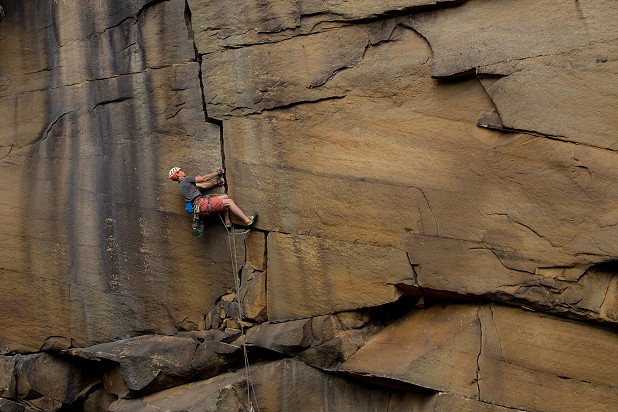
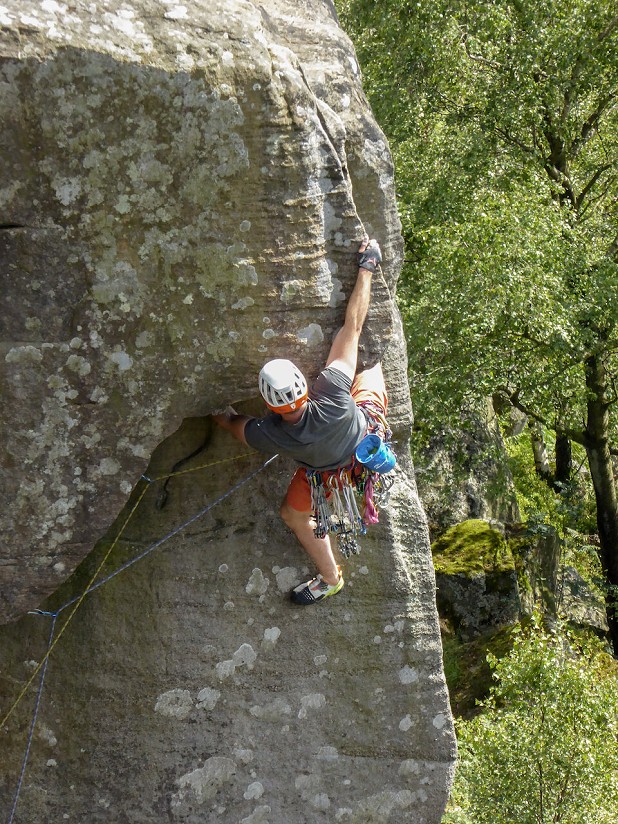
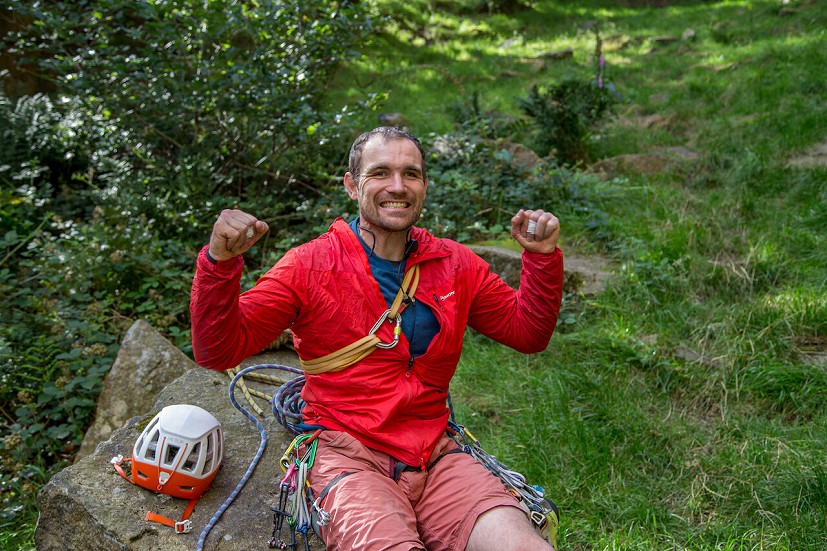

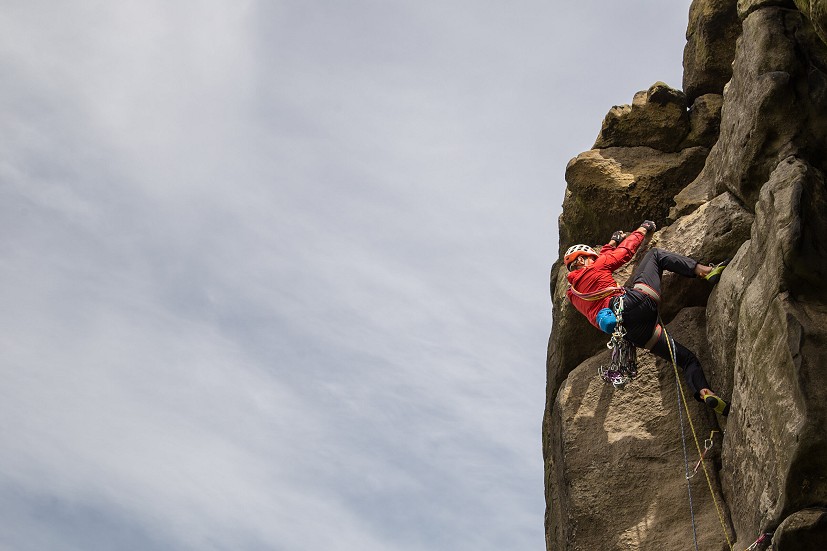
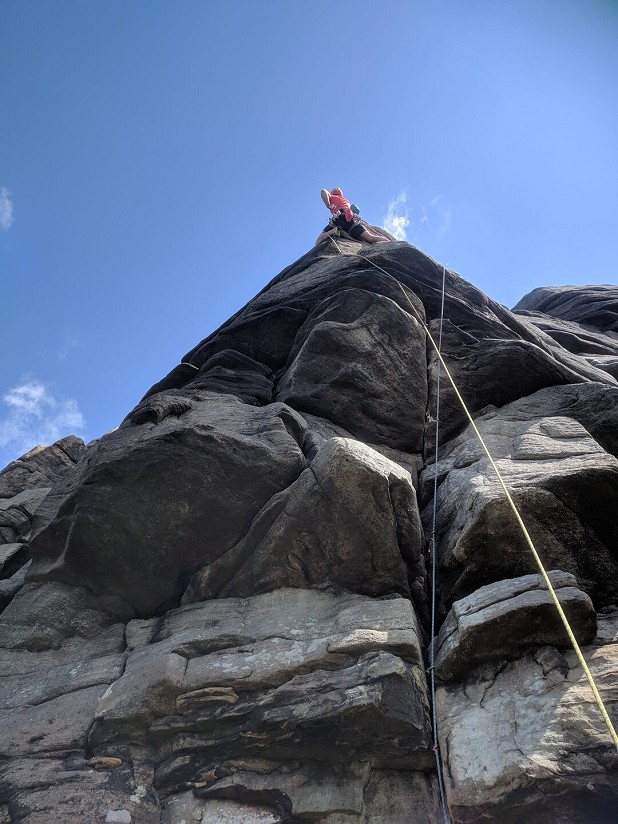

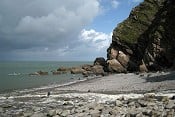




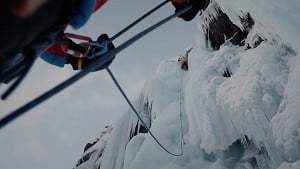

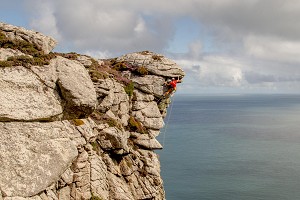
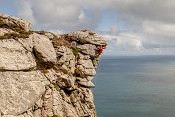
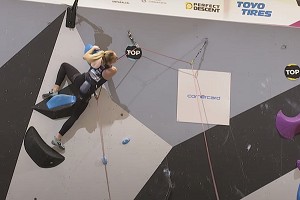
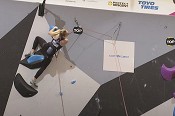

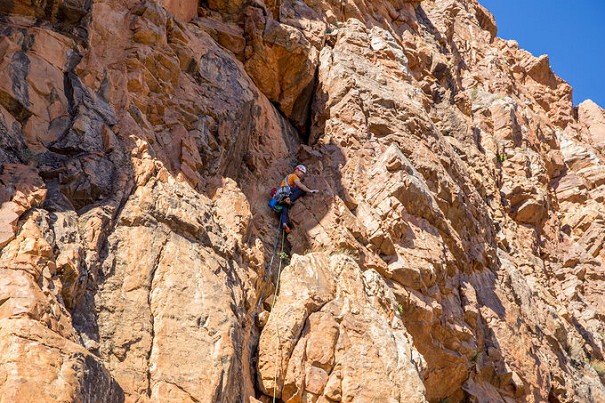


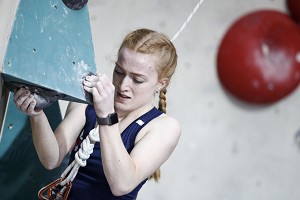
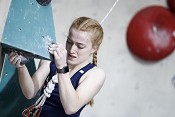
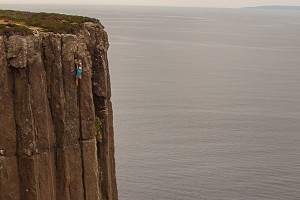


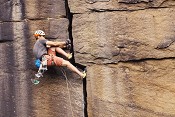
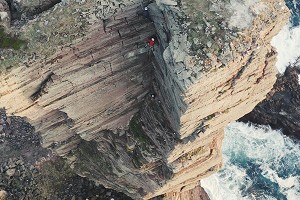
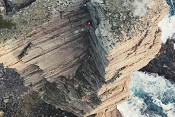
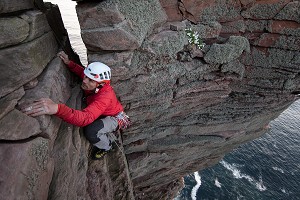
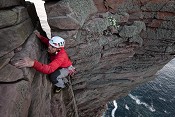
Comments
I know Jesse says he isn't interested in redpointing, but it would be a very interesting exercise as an outside observer. He must be really strong for the grades he's climbing in order to have some control and check placements etc. With his excellent proprioception he'd presumably be able to get as close to his physical limit redpointing a sport route as most of the rest of us. I wonder what that limit is? From watching some of his videos in lockdown I imagine its would be pretty high!
I may redpoint something one day...but don't hold your breath!
Awesome!